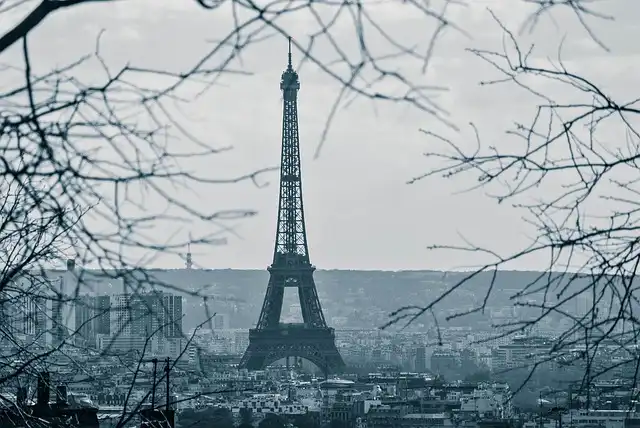Breathless: Godard, Belmondo, and the Nouvelle Vague

Breathless explores Godard's impact, Belmondo's cool, and the French Nouvelle Vague. It analyzes cinema's essence through sex, violence, and aesthetic influences, contrasting film with reality.
Michel’s love of movie theater is also his end. Life is not the cinema, and to believe so is an alarming error.
The Cinematic Allure of Michel Poiccard
His real-life partner made it clear to every person that to whistle, you just had to “place your lips together, and impact”: just in Bogey’s world might it be so basic. And when he arrived on the displays of the French cinéma-clubs that Godard had actually often visited given that he was sixteen, he inscribed himself so greatly and the psyche of the French that any operate in the American design merely required to bring him back in the kind of Jean-Paul Belmondo’s Michel Poiccard.
It is not possible to browse the city of Paris without the eyes of Anna Karina impending up above you. She lies in Père Lachaise about half-an-hours’ walk eastern of Montmartre, but your eyes satisfy her’s far before you put down flowers there– she is smudged on the billboards and in the City, smiling, locked into an expression of bemused nonchalance at the prospect of yet an additional re-release of the nouvelle vague functions; perhaps even in 4K this time around.
Godard’s Vision: Cinema as Girl and Weapon
Naturally, Michel is trendy. He must be– his aesthetic conduct is inherently cinematic, and is it not the lens of movie theater itself that enhances ‘coolness’ upon males? Godard’s proclamation that cinema is a ‘girl and a weapon’ is not simply explaining that a love passion and a resource of conflict are the only narrative devices you need to make a film. The truth that they are a girl and a gun is critical.
Godard’s insight (and there were lots of he seemed to almost unintentionally drop into– maybe an unpreventable repercussion of trying to tear the medium down and build it back up from scrape) was that cinema being an aesthetic tool, merely the aesthetic appeals of Bogart were enough to pirate the audience into viewing Belmondo as an extravagant number. Godard’s tracking shots managed him the center-of-the-world charm that can only be offered to a celebrity of Bogart’s quality, and the cigarettes and the hat did the rest.
And so when you walk down the Champs-Élysées and face the impulse to hurl a pack of handouts right into the sky and chant “New York Herald Tribune” it is not Jean Seberg you are mobilizing but Belmondo, with all his vagaries and his disgruntlement, and “Out of breath” begins looking much less like a celebration of cinema in all its glory and instead something a lot more pessimistic. The grisly end of Belmondo’s personality is your end, being busied with a medium that remains in so direct opposition to routine life, displaying by requirement just the highlights and the epic trappings of guns and girls.
Godard understood that it worked the other method, also: by going the other way– by making a movie regarding guns and girls– you can obtain, independently, whatever made movie theater tick. Sex and physical violence were not essential elements of cinema– they were the underlying substance of cinema itself.
Deconstructing Cinema: Sex and Violence
Look: that there is cinema before “Breathless” and movie theater after “Out of breath” has actually been declared advertisement infinitum. Whatever cocktail separates the slam-dunk wheelhouse of modern movie theater from the cinema dramatization of the Hays period seems to have been mixed right below.
The Michel Poiccard of “Out of breath” is a contrasting number; as much as you are lured to like him, he is relentless in showing himself to be nothing even more than a philanderer and a poser (and, undoubtedly– one’s personal pleasure of the film might extremely well pivot on whether one finds Belmondo ‘great’ or not). Godard is persistent on concealing them if he has any kind of compensatory top qualities. Despite these efforts, nonetheless, he has a weird charm that practically begs you to follow his ill fortune.
It doesn’t seem to be about anything, for one– after evaluating an initial cut for Truffaut, who set aside the components of the movie that might be trimmed out according to their hesitation to relocate the plot ahead, Godard responded by leaving in specifically the marked parts at the cost of any type of narrative advancement (approximately the tale goes). I do not know if the result of this spirit of disobedience was unintentional or a job of wizard. The film that came out was far more than a speculative retelling of a movie ‘in the American design.’ It seemed to encapsulate every little thing that was good about movie theater within it.
Look: that there is movie theater before “Out of breath” and cinema after “Out of breath” has actually been claimed ad infinitum. Godard’s understanding (and there were lots of he seemed to virtually mistakenly fall right into– maybe an unavoidable effect of trying to tear the tool down and build it back up from scratch) was that movie theater being a visual tool, just the aesthetics of Bogart were sufficient to pirate the viewer into seeing Belmondo as an attractive number. Godard’s proclamation that cinema is a ‘girl and a weapon’ is not just directing out that a love interest and a source of conflict are the only narrative tools you need to make a film. Godard realized that it functioned the various other method, too: by going the various other means– by making a movie about weapons and girls– you might obtain, independently, whatever made cinema tick. Sex and violence were not important parts of movie theater– they were the underlying substance of cinema itself.
Godard would certainly declare that his main preoccupation was Marxism, however Godard is a notoriously inadequate authority on Godard, or really anything else (take his dismissal of Tarantino as a ‘knave’ delighting in postmodern pastiche, something that he himself produced a whole career out of). While the national politics of Godard’s movie theater could have been overtly Marxist, his aesthetics remained mainly worried with the enrichment of style.
Cinema is invasive, voyeuristic, and infringes upon the world around it. Belmondo’s Michel was a film character, of program, but only insofar as he was on a display. He was representative of the cinephiles of Paris, and of you, the visitor– the movie theater fan who would certainly light up a cigarette in the meager hopes of being regarded, possibly from a side, as reminiscent of his heroes on display.
Godard and Truffaut were stressed with the films of Howard Hawks, and nowhere were those movies extra compelling than in the passive self-assuredness of their chainsmoking lead character, Humphrey Bogart. 1942 was a negative year for everybody, but not for Rick Blaine’s laid-back irreverence despite the war in “Casablanca.” Bogey stretched the traditional trappings of irreverence up until it was sexy to not care.
And that is what “Out of breath” is, formally: a film pared to the essentials, everything taken out up until there is absolutely nothing yet sex and physical violence left. Godard would certainly instead watch individuals drive about in elegant autos and declare their love for each various other; a man directs out just what parts of a woman he likes while in an auto.
Anna Karina’s Enduring Parisian Legacy
It is always Anna Karina season in Paris, and it is always Godard season in Paris. And while Godard’s eyes do not beam out of every counter top picture like Karina’s, it suddenly becomes clear getting in the seedier parts of the city that the world that you observe with your very own eyes– the Paris of graffiti and gangsters, of pupils and revolutionaries– is the world that Godard picked to set his cinema, and all cinema by extension, in.
1 Belmondo2 Breathless
3 cinema aesthetic
4 French cinema
5 Godard
6 Nouvelle Vague
« Weapons: School Shooting Aftermath & Horror UnveiledWar of the Worlds: New Film Adaptation’s Zero Percent Rating »
